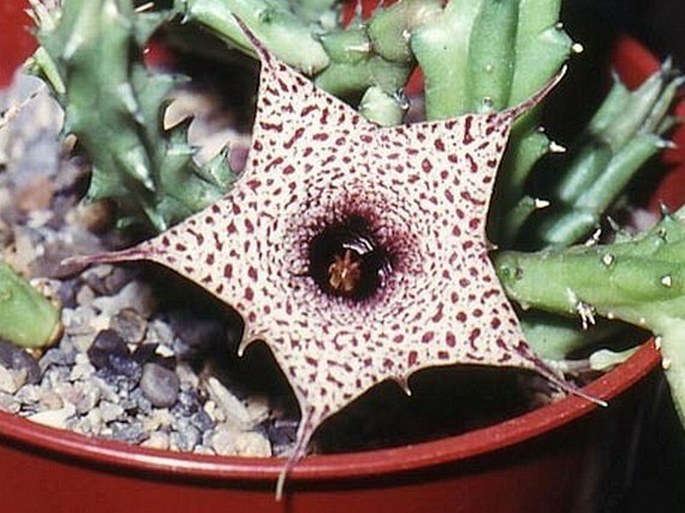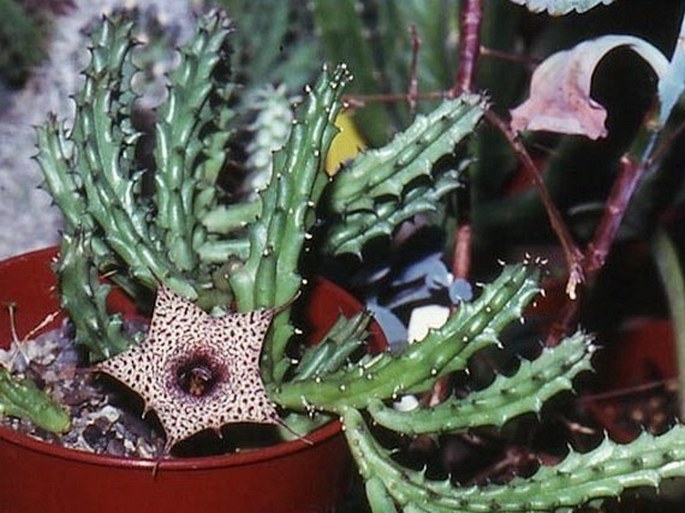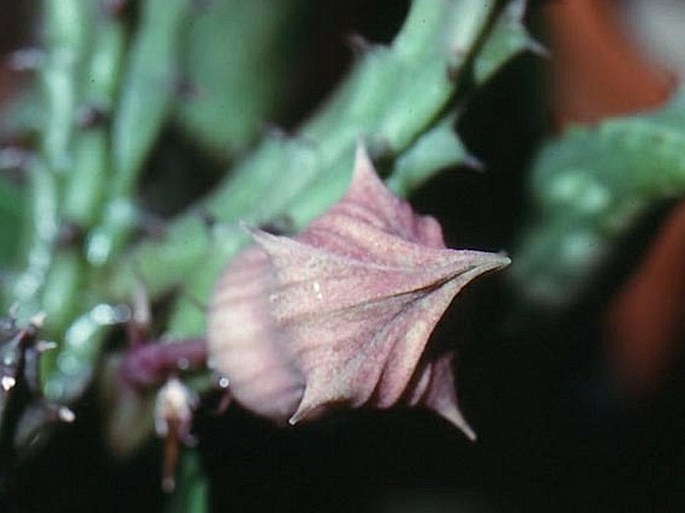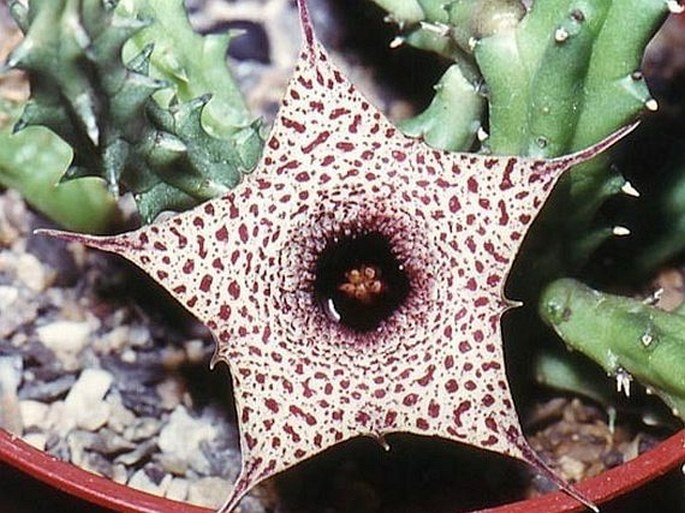Family: Apocynaceae Juss.

Distribution: Zimbabwe, near Harare; between Umvuma and Maswingo and in Mozambique close to Zimbabwe border.
Ecology: As most Huernias in sheltered position, in rich, well drainng soil, among grass or bushes or rocks. Blooms after summer dormancy at the beginning of new growth.
Description: Perennial succulent herb, stem branched from the base, 5 cm high, 1 cm across, green below, reddish-bluish above, glabrous, 5-angled, angles armed with teeth 3 mm long; flowers solitary on pedicels 6 mm long, facing upwards, tube 16 mm long, inflated at the bottom, somewhat constricted above, outer surface white, inside with dark blood-red short lines or mottled, mouth of tube inside densely papillose; corolla 4–5 cm across, lobes triangular-tapering, somewhat recurved, cream coloured, with numerous dark blood-red, irregular dots, intervening lobes tooth-like, 3 mm long, 2 mm wide, recurved; interstaminal corona dark maroon to black, lobes rectangular; staminal corona cream coloured with red brown markings, lobes obtuse, divergent, rarely erect. Pollinia yellow.
Note: This plant was named after a botanist collector A. Hislop who collected in today’s Zimbabwe in 1920–22. The plant was described in 1922.



These images were taken in culture.


